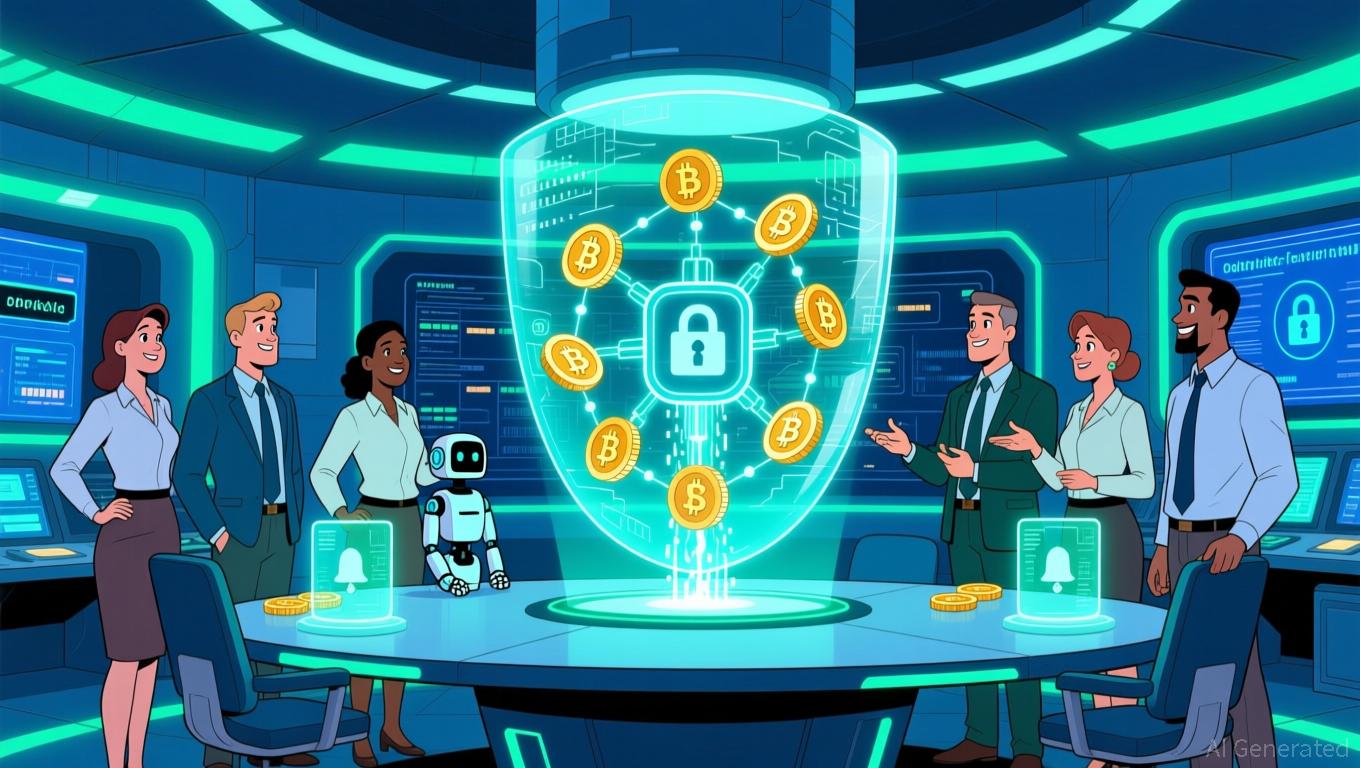Bitcoin Updates: 2028 or 2035? The Ongoing Quantum Era Discussion on Bitcoin’s Longevity
- Experts warn Bitcoin's ECC-256 encryption could be cracked by quantum computers by March 2028, per the Quantum Doomsday Clock's 2.3-year threshold projection. - Breaking Bitcoin's cryptography requires 1,673 logical qubits, achievable through exponential qubit growth and error-rate improvements by 2027-2028. - Industry responses include BTQ's quantum-safe Bitcoin implementation and IBM's 2029 fault-tolerant quantum computer, while governments advocate 2035 migration timelines. - The timeline debate highl
The impending impact of quantum computing on
The main risk stems from Bitcoin’s dependence on elliptic curve cryptography (ECC-256), which can be broken with just 1,673 logical qubits using Shor’s algorithm. In contrast, decrypting RSA-2048 and RSA-4096 would require 2,314 and 3,971 logical qubits, respectively. These numbers, based on surface code error correction, assume error rates between 10^-3 and 10^-5—levels that recent progress in quantum error mitigation suggests may be attainable within the predicted timeframe, as detailed in the BeinCrypto analysis.
Charles Edwards, the analyst who brought attention to the countdown, underscored the seriousness: "If quantum isn’t addressed for Bitcoin by then... we’ll be in serious trouble," he cautioned. This timeline matches current trends in qubit development, such as Google’s 53-qubit Sycamore chip in 2019 and forecasts of more than 6,000 qubits by late 2027, as mentioned in the TradingView report. Still, the assumptions behind the project—especially the rapid scaling of hardware and error reduction—have faced criticism. Agencies like the U.S. National Security Agency (NSA) and the UK’s National Cyber Security Centre (NCSC) suggest a more cautious timeline, advising post-quantum transitions by 2035, according to a
The financial implications are significant. With Bitcoin’s market value at $2.5 trillion and the privacy it provides, both could be jeopardized if quantum computers reach the necessary scale. Older Bitcoin wallets that use pay-to-public-key (P2PK) or reused pay-to-public-key-hash (P2PKH) addresses are especially at risk, since these reveal public keys on the blockchain. Meanwhile, the network’s hash-then-reveal mechanism offers a short-term safeguard for standard P2PKH wallets, which only disclose public keys during transactions.
The industry is responding with urgency.
Some critics contend that the Quantum Doomsday Clock’s ambitious schedule is influenced by marketing interests for post-quantum solutions rather than a consensus within the scientific community. A 2021 study by Gidney and Ekerå, often cited by skeptics, calculated that factoring RSA-2048 would demand 20 million physical qubits at a 10^-3 error rate—a scale far beyond what is currently possible. Nevertheless, supporters like Dr. Richard Carback and Colton Dillion, who created the clock’s model, argue that quantum advancements are happening more rapidly than anticipated.
With the deadline approaching, the Bitcoin ecosystem faces a crucial decision: either move swiftly to adopt post-quantum security measures or risk falling behind. Now that NIST’s FIPS-203 and FIPS-204 standards are finalized, the necessary tools for these upgrades are available. Experts point out that the main challenge is economic—balancing the expense of migration against the potential cost of inaction.
Disclaimer: The content of this article solely reflects the author's opinion and does not represent the platform in any capacity. This article is not intended to serve as a reference for making investment decisions.
You may also like
Aster News Today: CZ's ASTER Surge Sparks Intense Bull and Bear Showdown at the $1.29 Threshold
- Binance's CZ triggered a 40% ASTER token surge via a $2.5M purchase, but the altcoin later corrected 15% amid classic "pump and dump" dynamics. - Whale entities netted $7.7M from short positions as ASTER's $1.25 peak collapsed, highlighting crypto's volatility and speculative risks. - CZ defended decentralized market mechanics while analysts noted ASTER's critical $1.29 breakout threshold amid broader crypto turbulence and regulatory pressures.

"Chainlink and SBI Facilitate Safe and Regulatory-Compliant Cross-Chain Transfers of Tokenized Assets"
- Chainlink partners with SBI Digital Markets to enhance cross-chain interoperability for tokenized assets using CCIP. - The integration enables secure, private transactions and compliance automation, supporting institutional-grade digital asset operations across public and private blockchains. - This collaboration builds on prior projects with UBS and aligns with Japan’s regulatory openness, aiming to redefine institutional blockchain adoption in Asia and Europe. - Upcoming Chainlink tools like CRE and Co

ZEC briefly touched $510, with a 24-hour increase of 17.11%.